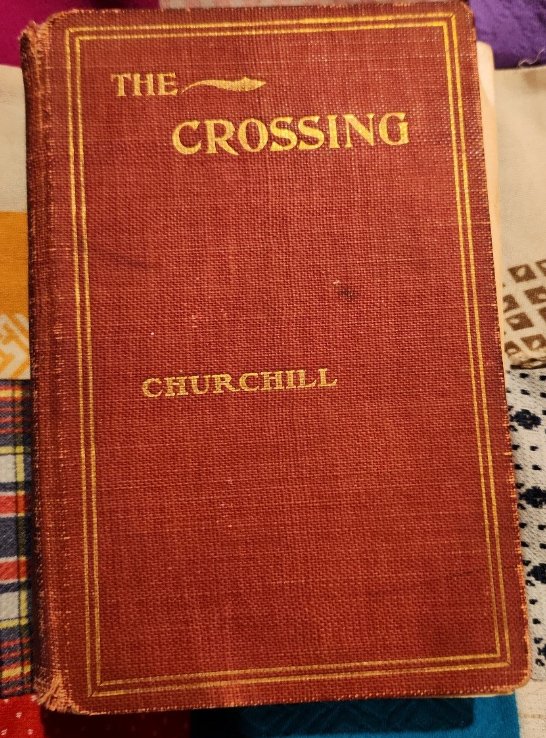The Crossing
by Randell Jones, November 2023
“We crossed the river.”
This is one way to begin telling about America’s first westward movement, an important origin story paralleling the founding of our independent nation, soon 250 years old. That story of our becoming America, stretching “from sea to shining sea,” has myriad episodes across generations, cultures, and languages. In the piedmont of North Carolina, we can tell one story of that first western migration with great authority because it happened here—"the crossing.”
Next year, 2024, Shallow Ford State Historic Site opens to the public. But November 2023 witnesses the 275th anniversary of the first crossing there by colonial settlers into the “Forks of the Yadkin,” today’s Yadkin and Davie counties. Those 1748 immigrants were the Morgan Bryan family, moving south from Virginia. They preceded the Moravians by five years and sparked a wave of immigrants into the Carolina piedmont. The arriving, extended Bryan family included granddaughter Rebecca who eight years later at 17 married Daniel, a son of the 1752 immigrant family of Squire Boone.
“The Crossing” was the bestselling novel of 1904, recounting the movement of North Carolinians into the Kentucky wilderness. It was written by American novelist Winston Churchill, a contemporary of the rising British statesman of the same name. Early in his novel, Churchill wrote, “We crossed the Yadkin at a ford, and climbing the hills…we went down over stony traces…through rain and sun….” America’s first westward migration was a struggle.
Beyond the Shallow Ford, the story of America’s first westward movement grows in fits and starts across two decades until the spring of 1775. Daniel Boone, hired by North Carolina’s Judge Richard Henderson, marked Boone Trace for others to follow, crossing through the Appalachian Mountains at Cumberland Gap into the heart of the Kentucky wilderness, hunting lands reserved by King George III for the Shawnee and Cherokee people. American colonists viewed those lands differently.
Stories of different cultures contesting to live on the same land is the story of America. It is the story of myriad international and intra-national conflicts as well. It is an age-old human story of scarcity, geographic advantage, resources, religion, and ego. Such stories soon become about survival. We can learn from history, if we want to, but digesting history, like migrating elsewhere, is a difficult task requiring patience, curiosity, and the suspension of long-held assumptions and beliefs. It starts with learning.
That crossing in November 1748, over a quarter-century before we became a country, is an entry point into an important American story during the years surrounding the American Revolution. Within a decade of the Bryans crossing and thousands more settlers arriving, the Cherokee War erupted; half the settlers retreated from the Carolina frontier until 1761. So many settlers then returned with more joining that during the latter 1760’s, Daniel Boone, a long hunter, was crossing the Blue Ridge Mountains and hunting farther west, harvesting deer skins for sale in Salisbury. The Cherokees said he was a poacher, but as Daniel explored deeper into farther-away lands, he lived like Cherokees in their forests. He understood the Shawnees, their language, and their ways. He was crossing cultural boundaries that required different ways of thinking, of moving, of being.
The spirit of frontiersman Daniel Boone as a learner, not a dominator, is commemorated in Winston-Salem today by our arrowhead monument, now 96 years old. It was dedicated to the children—the future—of our community on October 29, 1927, by local character Hampton Rich, a native of Davie County. That ceremony at the edge of Hanes Park was illuminated by torches carried by Wiley School students, all singing patriotic songs and listening to stories of America’s history as it was told at the time.
Whatever story we tell ourselves about America today, that story has beginnings. When we get the facts and explore them, we can understand how we came to be as we find ourselves today and we can prepare for a successful crossing into our future we will share together.
The Shallow Ford across the Yadkin River was a natural crossing for migrating animals followed also by early unknown indigenous peoples, native cultures of the colonial era, and westering immigrant settlers encroaching on Native lands as well as armies during the Revolutionary and Civil war eras.
Shallow Ford crossing on the Yadkin River
(image courtesy of Winston-Salem Journal)
Reenactor proxy for Rebecca Bryan Boone, Highway Historical Marker for Shallow Ford, and the “Mother Marker” for the Boone Trail Highway and Memorial Association, erected in Winston-Salem, Oct. 29, 1927 by J. Hampton Rich. (image by Randell Jones)
“The Crossing” by American novelist Winston Churchill was the bestselling novel of 1904.




